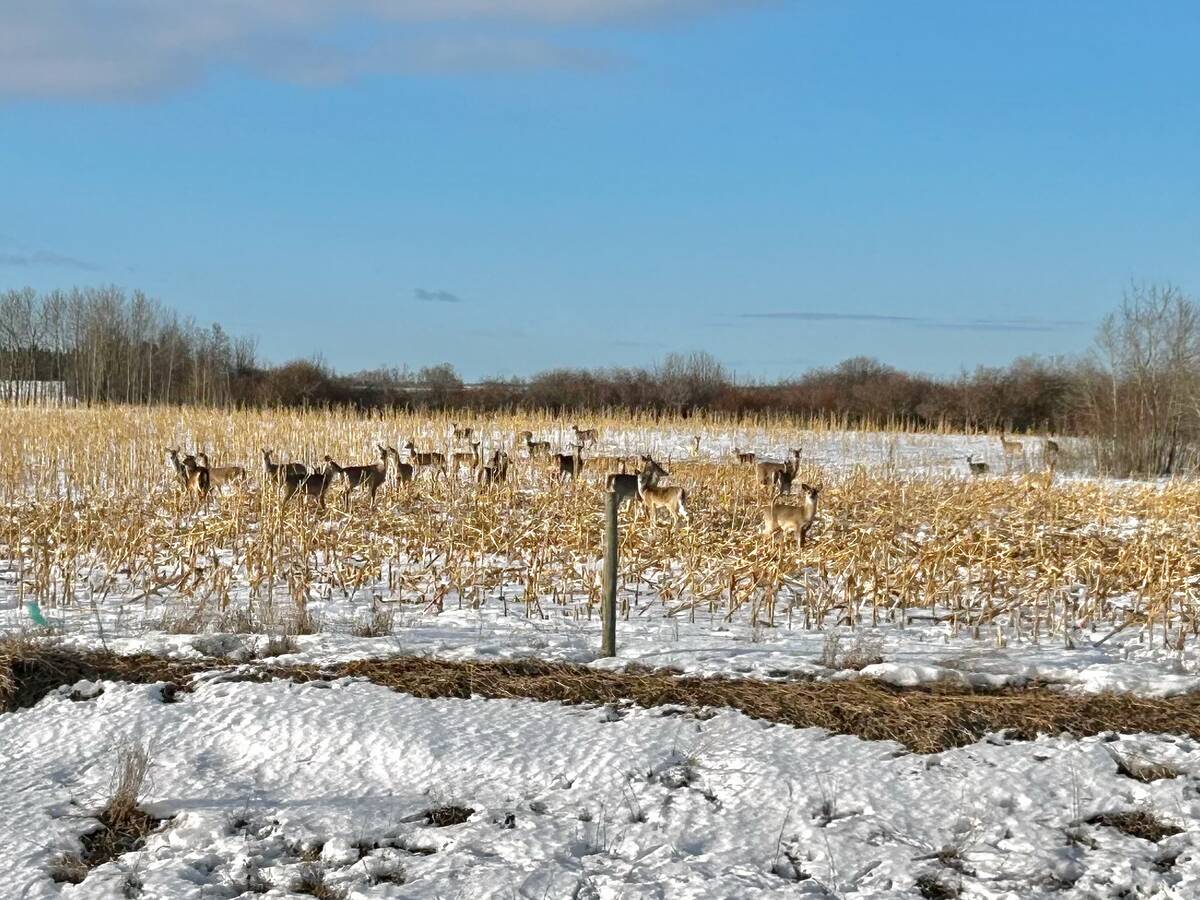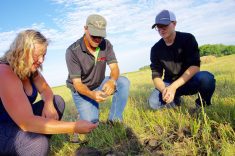It sure would be great to have access to the agricultural nutrients carried away by flood waters, as fertilizer prices continue to climb
What a difference a year makes. Last year at this time all of southern Manitoba was in various stages of panic as forecasts revealed just how bad the 2011 flood might be.
Ultimately our traditional flooding hot spot, the Red River Valley was mostly spared with a combination of manageable flows and decades of preparation. However, the Assiniboine River experience was an entirely different matter. Unprecedented flooding required desperate and heroic measures to mitigate disaster: super-size sandbags stacked three high to protect Brandon, the deliberate breach of the Hoop and Holler Dike, and the emergency construction of the Lake St. Martin channel.
Read Also

Five new CWD cases confirmed in Manitoba
Chronic wasting disease (CWD) has been found in five more Manitoba deer, including in two new municipalities without previous cases of the disease.
Manitobans literally put in and pulled out all the stops we could to prevent widespread catastrophe.
What a difference a year makes. We have flipped from historic flooding to severe drought conditions. Indeed every millilitre of water we diked, diverted and channelled downstream we may want back as we now confront a serious drought across the Prairies. As well, it sure would be great to have access to the agricultural nutrients carried away by flood waters, as fertilizer prices continue to climb.
Federal report
In 2007 a federal government report warned of a scenario — more flooding, more droughts and more overall variability — very similar to our 2011-12 Manitoba experience.
Fulfilling a campaign promise, the provincial government has now embarked on a comprehensive surface water management strategy. And not a moment too soon, as we cannot bear the costs of repeat flood episodes like 2011, or the costs of more frequent drought episodes, which can be even more economically debilitating.
A comprehensive surface water management strategy is a core requirement for 21st century sustainable development in Manitoba. A traditional water strategy that is singularly focused on flood protection — channelling water downstream to Lake Winnipeg — misses the major co-benefits of water conservation, nutrient management and rural development.
University of Manitoba researcher Greg McCullough and colleagues have clearly set out the interconnection of issues in last month’s issue of the prestigious Journal of Great Lakes Research. Simply put, flood events are the dominant driver of Lake Winnipeg nutrient loading. This linkage with flooding reveals at least three opportunities for upstream flood protection, water conservation and nutrient recycling.
IISD believes that the provincial surface water management strategy should be approached not as an expensive environmental mitigation problem, but as a sustainable development imperative. It offers a major innovation opportunity and an investment strategy that yields major public and private benefits.
Novel approach
Indeed, through the International Institute for Sustainable Development’s work on the Lake Winnipeg Bioeconomy Project, IISD has shown that novel watershed management can generate flood and drought protection, higher habitat values, large nutrient load reductions and new agricultural value chains worth hundreds of millions, if not tens of billions of dollars of annual revenue, depending on the level of biotechnology investments.
All of the key principles are on display. IISD’s Netley-Libau Marsh nutrient-bioenergy project demonstrates how biomass harvested for energy can recycle nutrients and improve habitat. Another example is the Tobacco Creek Model Watershed near Miami, Manitoba, where the economic and environmental benefits of distributed water storage have been on display for decades. The North Ottawa Creek project in west-central Minnesota is yet another example where the State of Minnesota has shown the seamless integration of flood storage with enhanced agriculture productivity.
A surface water management strategy for Manitoba infused with bioeconomy principles — recycling water, nutrients and biomass and reaping the major benefits thereof — gives focus, purpose, urgency and the investment case for the key recommendations of the Consultation on Sustainable Development Implementation multi-stakeholder report accepted by the provincial government in 2000.
The COSDI report recommends collaborative, large area planning for sustainable development, preferably on watershed boundaries.
If there was ever ambiguity as to why we need a sustainable development solution, we now have an answer.
Our water management challenges pose profound risks to this and future generations of Manitobans. A creative integrated and modern approach not only deals with the risks but creates the foundation for a century of prosperity for this province. IISD is confident that, given the facts, Manitobans will opt for 21st century wisdom.














